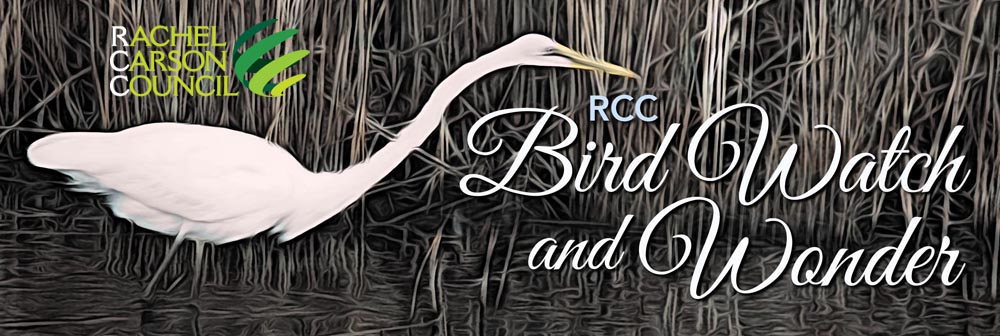 | | | It is officially winter, and the weather outside is frightful. Thanks to global climate change, it is disrupted and changeable, ranging from frigid and snowbound, to abnormally warm and early springlike. 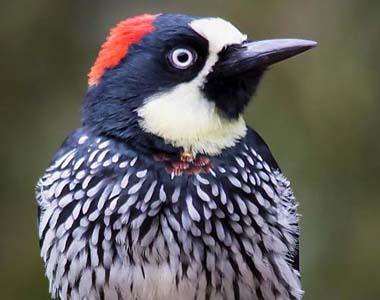 But either way, birds are on the move and beginning to migrate. So, in this February issue of RCC Bird Watch and Wonder, we look at how birds survive the winter, what we can learn from their migration, and the amazing and amusing food hoarding methods of the fabled Acorn Woodpecker discovered during routine pest control at a house in Santa Rosa, California. But either way, birds are on the move and beginning to migrate. So, in this February issue of RCC Bird Watch and Wonder, we look at how birds survive the winter, what we can learn from their migration, and the amazing and amusing food hoarding methods of the fabled Acorn Woodpecker discovered during routine pest control at a house in Santa Rosa, California.
But birds are doing more than just moving around. They are escaping from aviaries like Flaco, the Eurasian Eagle-Owl, now evading capture in Central Park. Or, they are moving in, like a Spotted Owl who has decided to attend Agnes Scott College and, being wise, hangs out in the rafters of the library. You’ll also be able to see (or read) the thoughts of RCC National Advisory Council member and MacArthur “genius” award winner, Drew Lanham, in a video on why conservation efforts need to blend rigorous science and evocative art. And RCC’s bird maven, Ross Feldner, is at it again, with another fascinating (and informative) article on what birders should know about coffee and birds as they gulp some morning Joe before their early morning birding foray. 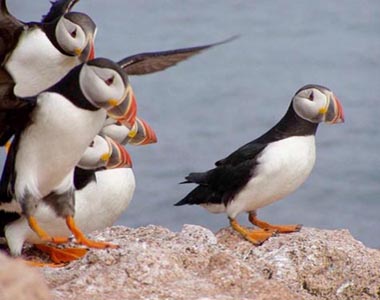 Our “Bird of the Week” feature has proved so popular that we are now showing the best one of the month, in this case, the perennially popular Atlantic Puffin, so we can elicit some oohs and aahs. Our “Bird of the Week” feature has proved so popular that we are now showing the best one of the month, in this case, the perennially popular Atlantic Puffin, so we can elicit some oohs and aahs.
And since it is indeed still winter, the best of this month’s Momentary Meditations, Stephen Shick’s insightful reflections on nature and how it makes us feel, offers down-coated Common Eider happily bobbing in choppy waters despite the frigid temps. And they don’t even need morning coffee. Now that is something to think about. | | | | | | | | How Do Birds Survive the Winter? It seems logical that most birds flee the northern regions to overwinter somewhere warmer, such as the tropics. Their feat of leaving their homes, navigating and negotiating often stupendous distances twice a year, indicates their great necessity of avoiding the alternative—of staying and enduring howling snowstorms and subzero temperatures. However, some birds stay and face the dead of winter against seemingly insurmountable odds. That they can and do invites our awe and wonder, for it requires solving two problems simultaneously. | | | | | | | | On Routine House Call, Pest Control Finds 700 Pounds of Acorns in the Walls When Nick Castro received a call about an insect problem at a California home, the pest control technician figured a dead animal was stuck inside a wall. When he cut a hole in the wall to find it, however, Castro witnessed something he’d never seen in more than 20 years in the business. Thousands of acorns spilled out of the wall, and more appeared whenever Castro stuck his hand into the hole. He soon discovered woodpeckers had stored tens of thousands of acorns, which he said weighed roughly 700 pounds, in a wall cavity. | | | | | | | | What We Can Learn From This Magnificent Migration Last week, waking up on the day my husband and I planned to visit Wheeler National Wildlife Refuge, outside Decatur, Ala., my very first thought was, “Today I get to see the cranes!” I don’t remember the first time I heard the distinctive burbling cry of the sandhill cranes rolling overhead during the spring migration, but I’ve been looking for a free winter morning to see those cranes up close ever since. Immense flocks of sandhills — 15,0s00 at Wheeler alone — spend winter at several wildlife refuges within a few hours’ drive of Nashville. | | | | | | | | Bird Expert and Poet Drew Lanham on How He’s Inspired By the Natural World Drew Lanham refers to himself as a ‘rare bird.’ The ornithologist, naturalist and writer says he believes conservation efforts must be a blending of rigorous science and evocative art. Lanham is among the new class of MacArthur Fellows, an honor often called ‘The Genius Award.’ Jeffrey Brown traveled to South Carolina to speak with Lanham for our arts and culture series, CANVAS. Drew Lanham is a member of the Rachel Carson Council (RCC) National Advisory Council | | | | | | | | Don’t Feed the Bears! But Birds OK, New Tahoe Research Shows Wildlife biologists and forest rangers have preached the mantra for nearly a century at national parks like Yellowstone and Yosemite, and for decades in areas where urban development increasingly invaded native wildlife habitat. Snowshoe and cross-country ski enthusiasts routinely feed the tiny mountain chickadees high above the north shore of the alpine lake on the California-Nevada border. The black-capped birds of Chickadee Ridge will even perch on extended hands to snatch offered seeds. | | | | | | | | | | Remembering Toni Morrison, the Bird Whisperer A year after Morrison’s passing, a journalist and birder reflects on how her time with the cherished author changed her relationship with birds—and with herself. Deep readers of the visionary novelist Toni Morrison appreciate the significance of birds in her work—they show up everywhere in her illustrious canon. I had the great fortune of experiencing how she treasured them in her everyday life. I met Toni when I interviewed her for The Pieces I Am, a film about her art and life. | | | | | | | | This Year’s Bonanza of Boreal Birds Once Again Bears Out the Winter Finch Forecast As predicted, grosbeaks, crossbills, and other northern birds are on the move, visiting feeders and delighting birders. Prognosticator Tyler Hoar explains what goes into the annual projection. For a certain type of birder, the Winter Finch Forecast is a highlight of the year. Canadian naturalist Ron Pittaway pioneered the forecast in the 1970s and ‘80s, using the abundance or scarcity of seeds, berries, and other wild crops in the North Woods to predict the cold-season movements of nomadic. | | | | | | | | Finding Birds With eBird Map any species, anywhere. Dynamic range maps for every species in the world, updated live with each eBird checklist that gets entered. See a full species’ range as well as specific points on the map by zooming in. Discover birding hotspots. Find the best places to go birding around the world. Millions of eBird Hotspots provide up-to-the-minute information on the very best locations and what’s been seen there. | | | | | | | | Owl Still Visiting, But Ground Floor of Agnes Scott College Library Reopens It was a little funny at first. Now, an owl perched high inside the Agnes Scott College library is ruffling some feathers. The owl remained inside McCain Library on Thursday, three days after falling through the chimney and forcing the college to close the building. The bird doesn’t appear to be injured from the fall. On Thursday, the ground floor of the library reopened for students. But the owl just doesn’t want to leave. | | | | | | | | Coffee for Bird Lovers? It’s called “bird-friendly,” “songbird safe” and “shade-grown”. This is coffee grown organically on highland plantations where it grows beneath a mixed canopy of taller trees. These habitats, where migratory birds like the Baltimore Oriole, Indigo Bunting, Solitary Vireo, Wood Thrush, and Magnolia Warbler make their homes during the northern hemisphere’s winter months, are threatened by how coffee is increasingly grown at an industrial scale—cutting down trees to grow coffee in full sun and applying pesticides to increase production. | | | | | | | | Those Window Stickers to Prevent Bird Strikes? There’s a Catch. Every year, hundreds of millions of birds die in the United States from flying into glass. New research shows how to prevent some of those deaths. A thump on the window, if you’re around to hear it. A dead songbird below. Many people seek to prevent this sorrowful scenario by warning birds away with decals or film applied to windows of homes and office buildings. But there’s a big catch, a new study suggests: These products only work if affixed to the outside of the glass. | | | | | | | | Birding Festivals and Events A great way to enjoy bird watching is by going to festivals—they’re organized to get you to great birding spots at a great time of year, and they’re a great way to meet people. Experts and locals help you see more birds, and you’ll meet other visitors who share your hobby. While you’re there, keep an eye out for Cornell Lab representatives, as we do attend several festivals each year. | | | | | | | | Atlantic Puffin These sharp dressers have elegant plumage and a dramatically colored beak. Nicknamed the “clown of the sea” they breed in burrows on islands in the North Atlantic, and winter at sea. Due to their weight Atlantic Puffins must flap their small wings frantically to stay aloft, however, when underwater those wings become powerful flippers that allow the birds to skillfully maneuver to catch small fish one by one until they have a full beak. They are long-lived often with life spans of 30 plus years and like many seabirds with long life spans their young take several years to mature. | | | | | | | | Gifted With Ballast The waters off the Gloucester, MA coast look forbidding as they crashed upon the shoreline rocks. These eiders, however, seemed almost to delight in riding the rough surf without concern for being thrown against the rocks. | | | | | | | | Feathers Together by Caron Levis (Author), Charles Santoso (Illustrator) 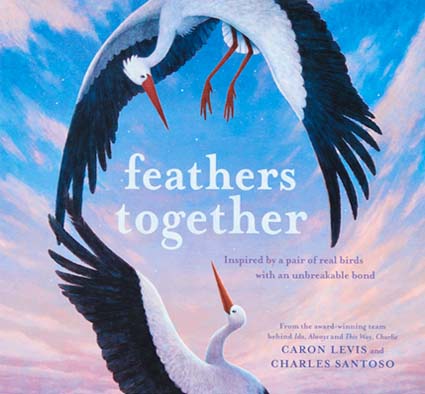 From the award-winning team behind Ida, Always and This Way, Charlie comes an uplifting story of animal friendship, inspired by a real-life pair of storks whose bond overcame great distance. From the award-winning team behind Ida, Always and This Way, Charlie comes an uplifting story of animal friendship, inspired by a real-life pair of storks whose bond overcame great distance.
Best friends Malena and Klepetan always adventure together! The two excitedly prepare to fly thousands of miles for the flock’s annual migration to a warm winter. But when Malena is injured, she stays in Croatia while Klepetan goes to South Africa—and the pair must navigate the turbulent winds of separation for the first time.
Being apart is hard. Malena and Klepetan miss each other achingly, and they have big feelings about adventuring on their own. But even over the vast distance, the two brave explorers discover ways to enjoy their separate seasons while keeping their hearts connected—and their hopes aloft that spring will bring them back together. Read more and purchase | | | | | | The Legend of Pale Male 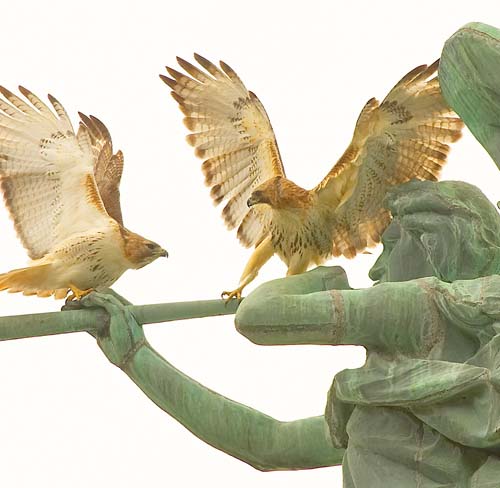 In the winter of 1991, a red tailed hawk lands in Central Park. In the winter of 1991, a red tailed hawk lands in Central Park.
The bold newcomer has one goal in mind: create a dynasty of red tails in the heart of New York City. A young wildlife filmmaker wannabe decides to buy a video camera and starts following the hawk in its quest. It's the beginning of a unique New York love story that is both fairytale and fable but all completely true. This is a tribute to the magic of nature and the spirit of the greatest city in the world.
“Best of Festival”—International Wildlife Film Festival
“Best of Festival”—Wild & Scenic Environmental Film Festival
“Audience Favorite Award”—Santa Barbara International Film Festival
“Audience Favorite Award”—Palm Beach International Film Festival
“Best Script”—Jackson Hole Wildlife Film Festival Click here to watch for free! | | | | | | The February 2023 issue of Bird Watch and Wonder was produced by Ross Feldner. | | | | | |  The Rachel Carson Council Depends on Tax-deductible Gifts From Concerned Individuals Like You. Please Help If You can. The Rachel Carson Council Depends on Tax-deductible Gifts From Concerned Individuals Like You. Please Help If You can. | | | |  Sign Up Here to Receive the RCC E-News and Other RCC Newsletters, Information and Alerts. Sign Up Here to Receive the RCC E-News and Other RCC Newsletters, Information and Alerts. | | | | | | | | | | | |